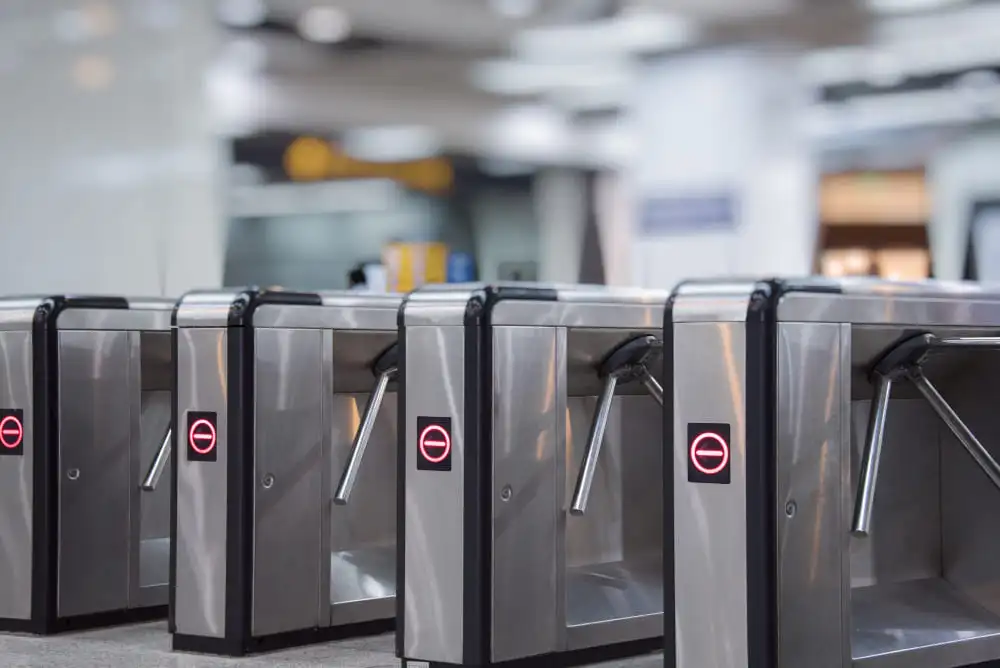A reliable and effective access control system in Singapore is essential at a time when technology breakthroughs are drastically altering many aspects of everyday life. In a variety of locations, including commercial buildings, high-security institutions, and public transit hubs, these systems act as the first line of defence.
They also aid in the smooth movement of people, which is important for contemporary urban planning. The turnstile gate in Singapore has been a more often used option for businesses and governments alike in this dynamic environment because it offers a good combination of ease and security.
Evolution of Entry Systems
Turnstiles have changed dramatically throughout time as an instrument of access control system in Singapore. At first, they were crude manual methods. They have evolved into sophisticated, secure, and automated systems as a result of technological improvements over time. Likewise, Singapore has always embraced cutting-edge techniques to promote efficiency and public safety as an early adopter.
Types of Turnstile Gates
Tripod Turnstiles
These are the most typical; you may frequently see them at gyms and transit stops. They are inexpensive and simple to set up. They do, however, only offer a bare minimum of protection against unauthorised access.
Full-Height Turnstiles
These offer a better level of protection and resemble a rotating door. They are frequently utilised in secure areas. However, their size and price are constraints.
Optical Turnstiles
Usually used in business offices, they employ sensors or lasers to provide entry. They are less obtrusive but less effective in preventing tailgating.
Waist-High Turnstiles
These turnstiles, sometimes referred to as paddle gates, strike the balance between optical and tripod turnstiles. They provide a mediocre degree of security and are a little obtrusive.
Current Technologies
Biometric Authentication
A layer of protection is added by biometrics like fingerprint and eye scanning. Additionally, they simplify the access procedure.
NFC and RFID
Near-field communication (NFC) and Radio-Frequency Identification (RFID) tags are often used for quick, contactless entry.
Face Recognition
This technology is still in its nascent stage but shows great potential for secure and contactless access.
Mobile Access Control
Increasingly, smartphones are being used to gain entry, offering convenience and reducing the need for physical cards or keys.
Significance in Singapore
Public Transport
Turnstile gate in Singapore is crucial in managing the heavy footfall in mass rapid transit (MRT) stations and bus interchanges. Moreover, they help in gathering data for better public transport planning.
Commercial and Secure Facilities
High-security buildings and even commercial complexes rely heavily on turnstile gates for controlled entry. Likewise, this ensures a secure environment for both work and business activities.
Challenges
Overcrowding
During peak hours, existing turnstile systems can become bottlenecks. Thus, handling large crowds efficiently remains a challenge.
Maintenance
The reliability of turnstile systems hinges on regular maintenance. Even a small glitch can lead to significant disruptions.
Security Concerns
Tailgating and piggybacking are still potential vulnerabilities. Therefore, improving the systems to mitigate these risks is essential.
User Experience
Lastly, balancing security with ease of use is a challenge. Excessive security measures can hinder the smooth flow of people, affecting user experience.
Future Trends
AI and Machine Learning
Artificial Intelligence and machine learning algorithms can provide predictive maintenance alerts and even flag security concerns in real-time.
IoT Integration
Internet of Things (IoT) can offer real-time monitoring, further enhancing both security and efficiency.
Smart City Integration
Turnstile data can be integrated into wider smart city initiatives. Consequently, this would allow for more coherent and efficient urban planning.
Social and Ethical Considerations
Data Privacy
As these systems collect a plethora of user data, how this information is stored and utilized is crucial.
Accessibility
Ensuring these systems are easily usable by people of all ages and those with disabilities is a moral imperative.
Environmental Concerns
The materials and energy used in these systems must be sustainable. Furthermore, the aim should be to minimize environmental impact.
Emerging Technologies
Augmented Reality
AR can provide a more interactive and intuitive user experience. For instance, guiding users through large transit hubs.
Blockchain
This can offer a secure, transparent way to manage the large data sets generated by these systems. Additionally, it can prevent unauthorized access to data.
Quantum Computing
Although still theoretical in application, quantum computing could offer new paradigms in security algorithms.
Global Comparisons
Singapore’s adoption and implementation of advanced turnstile systems set it apart from many other global cities. However, there are lessons to be learned from other countries, especially in terms of scalability and adaptability.
Policy Implications
Regulations
As technology advances, so does the need for regulations that ensure public safety and data privacy.
Public-Private Partnerships
Such partnerships can accelerate technological advancements. Therefore, a cooperative approach between the government and private sectors could be beneficial.
Conclusion
The future of the access control system in Singapore, especially the turnstile gate in Singapore, appears promising. The integration of cutting-edge technology, attention to social and ethical considerations, and a commitment to continuous improvement suggest a bright future. Thank you for joining us in exploring this captivating topic.
Read More:
Tips for Choosing the Right IP Security Camera for your needs

